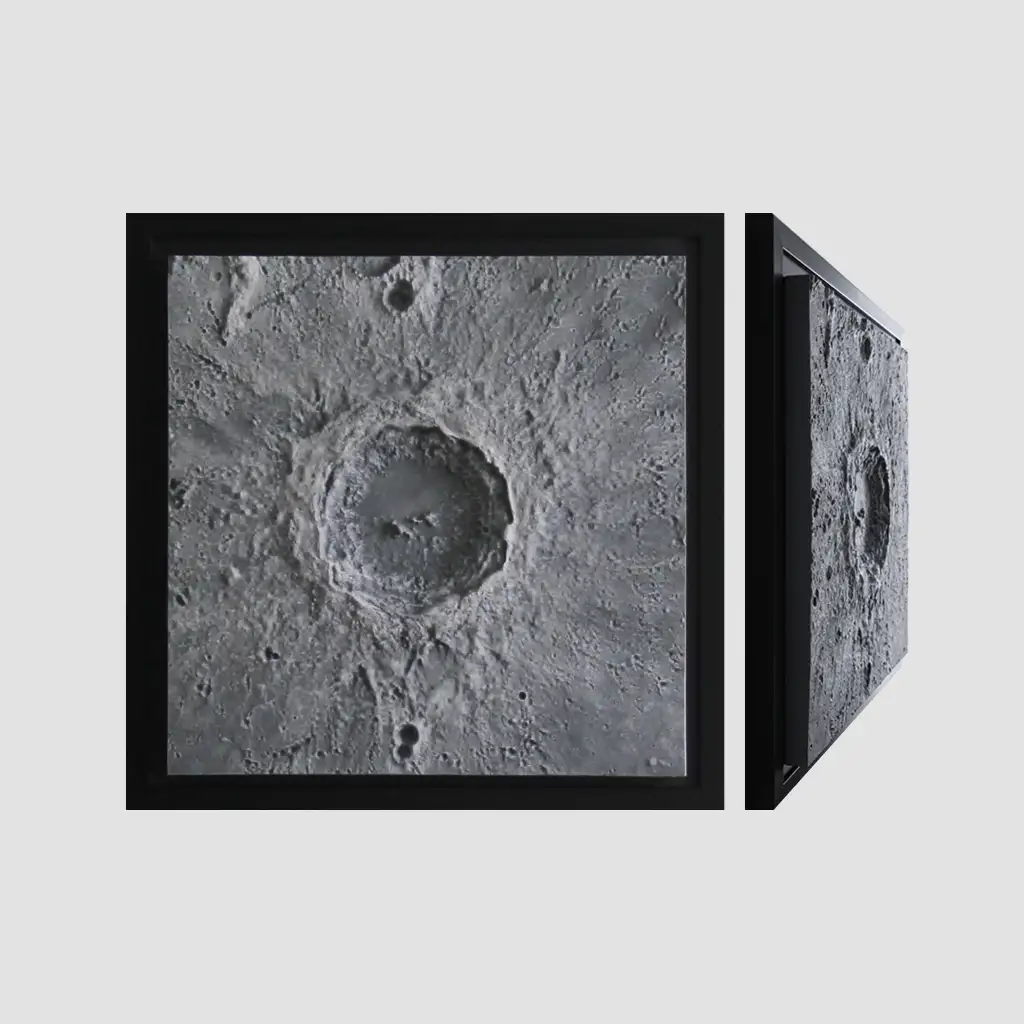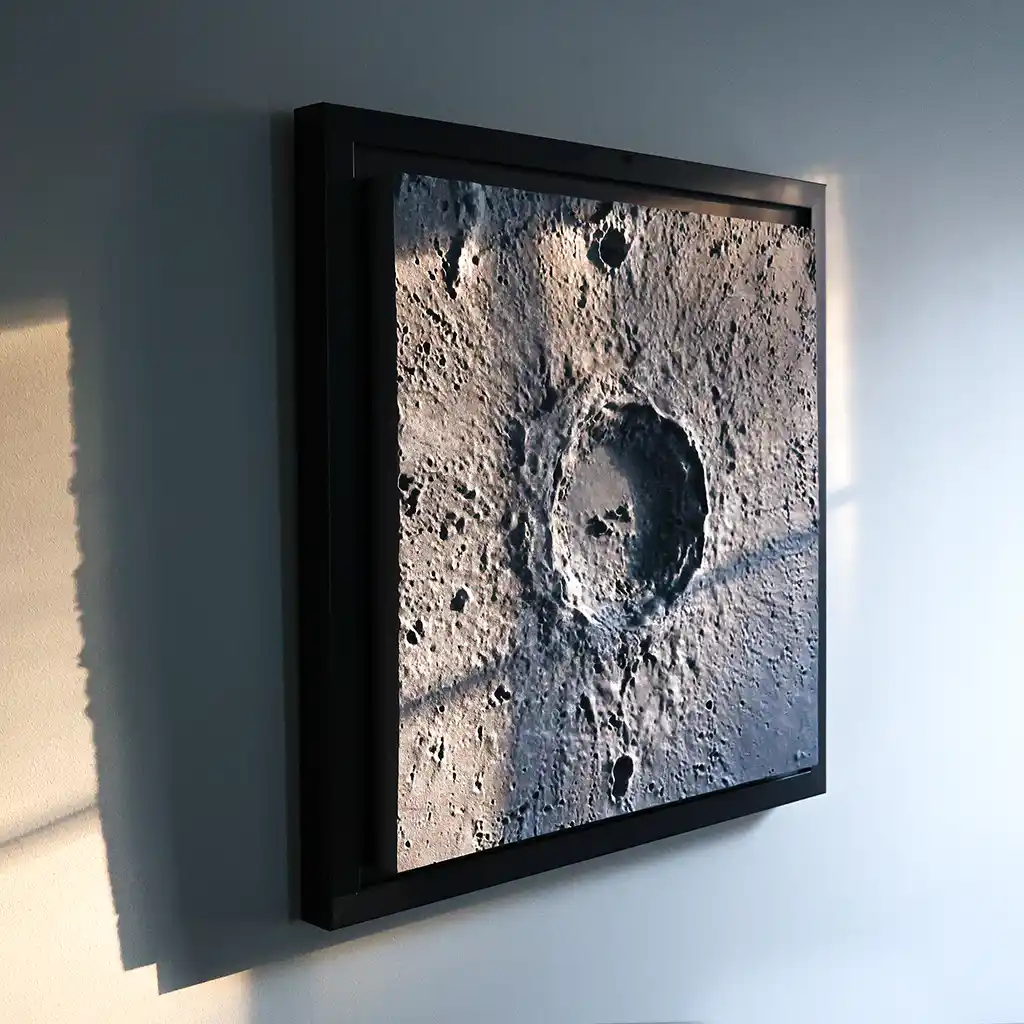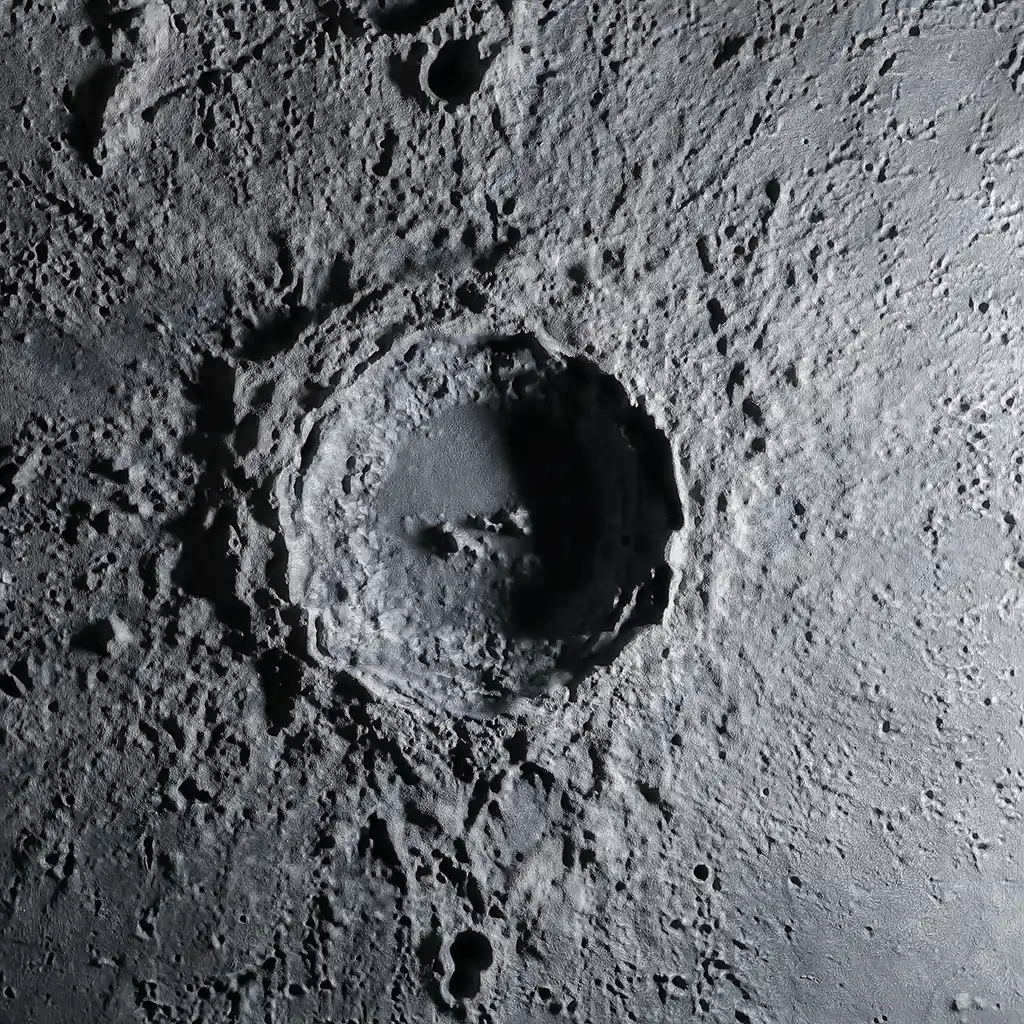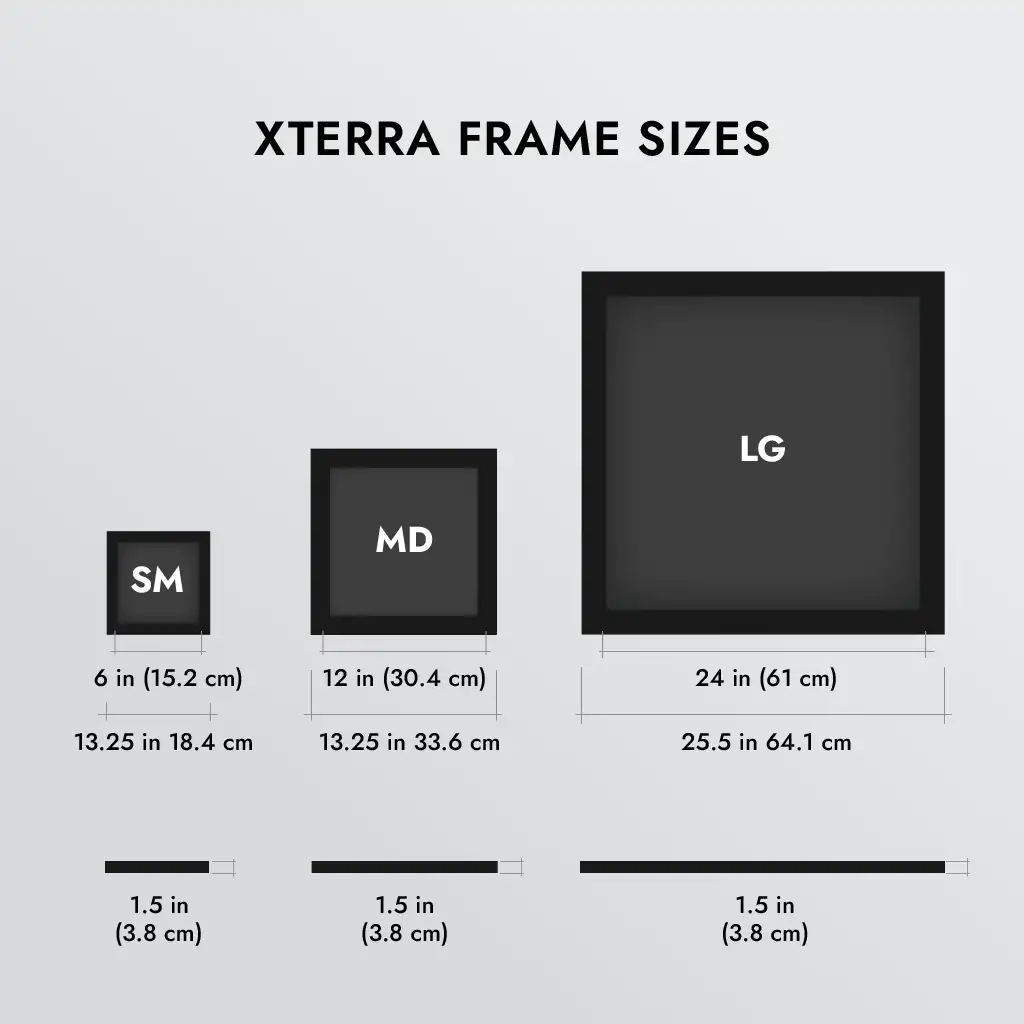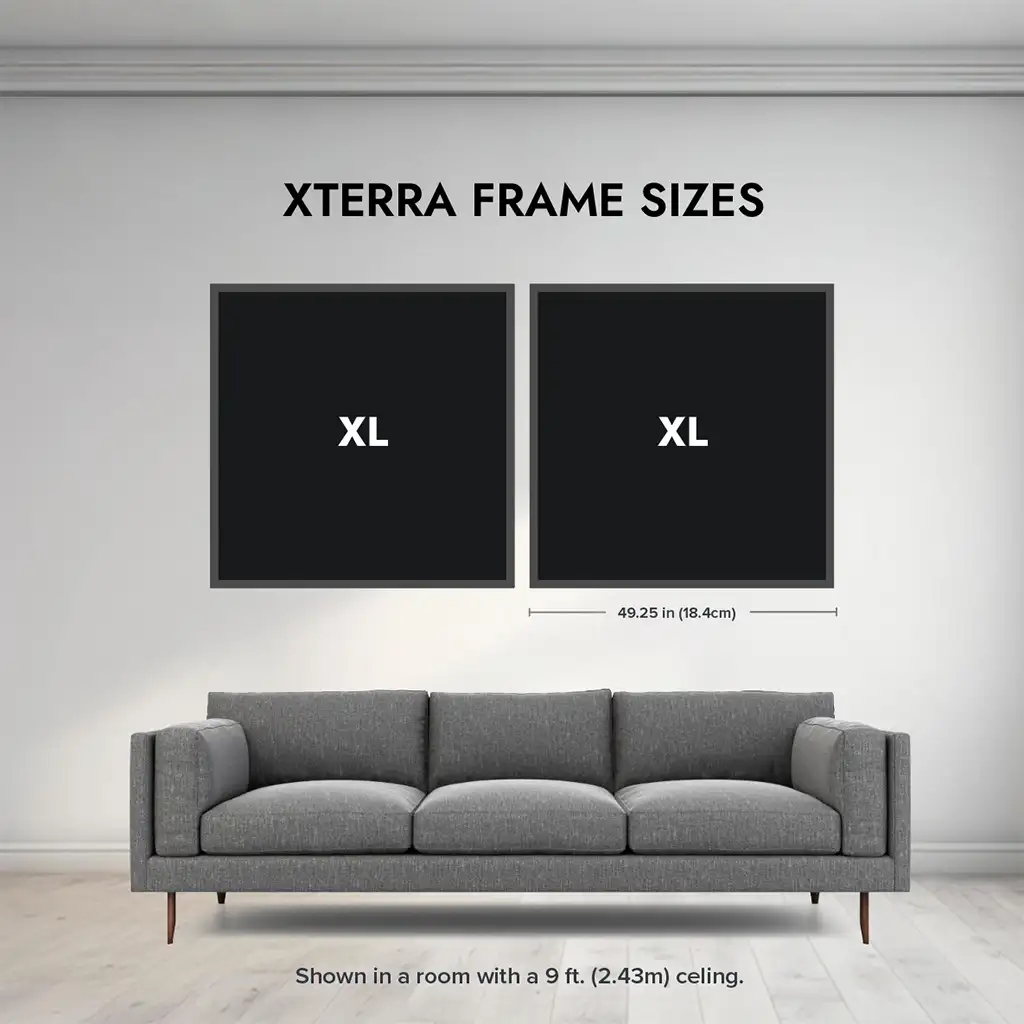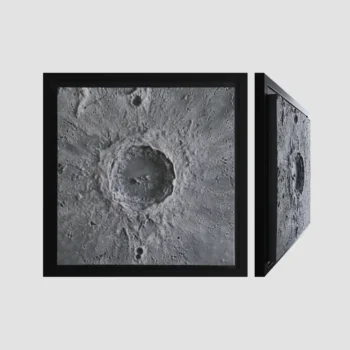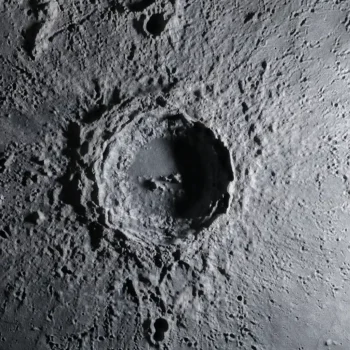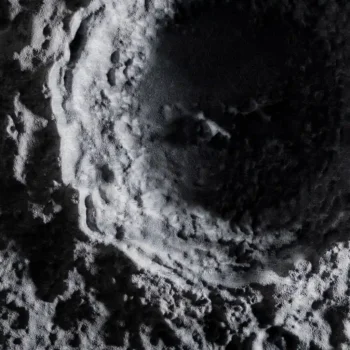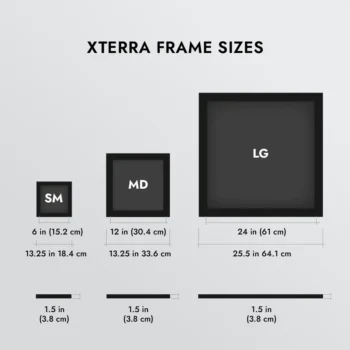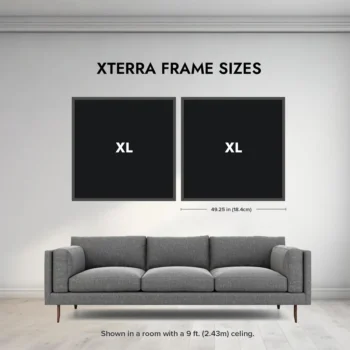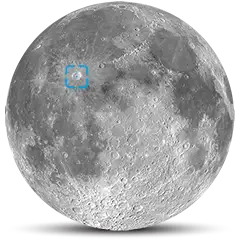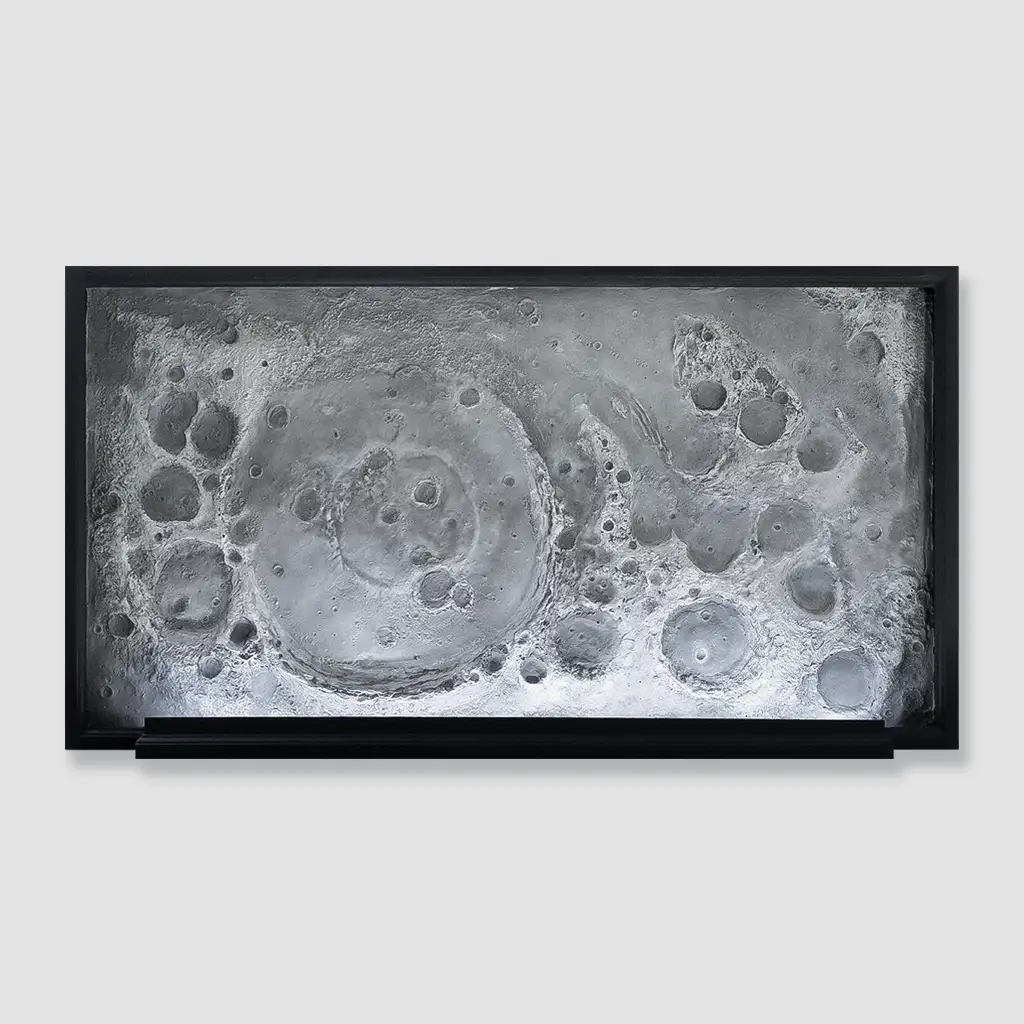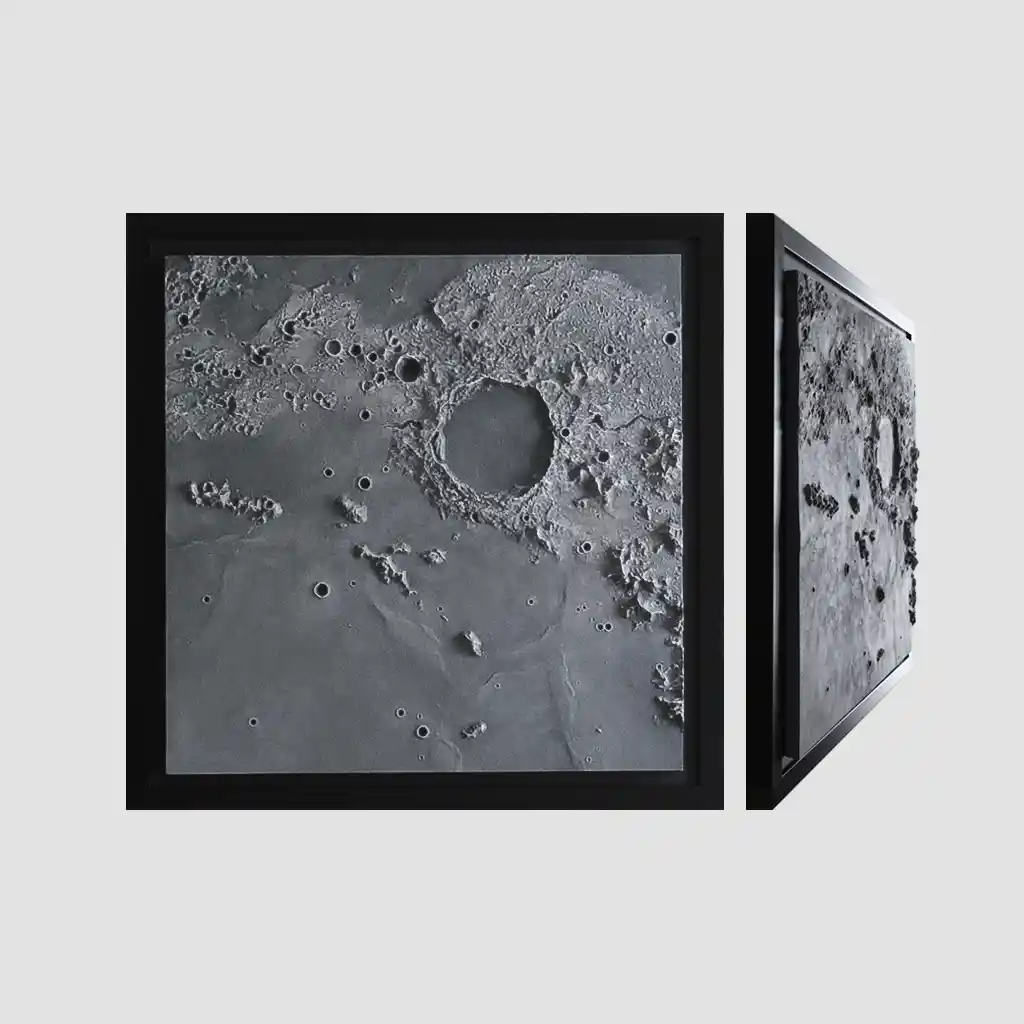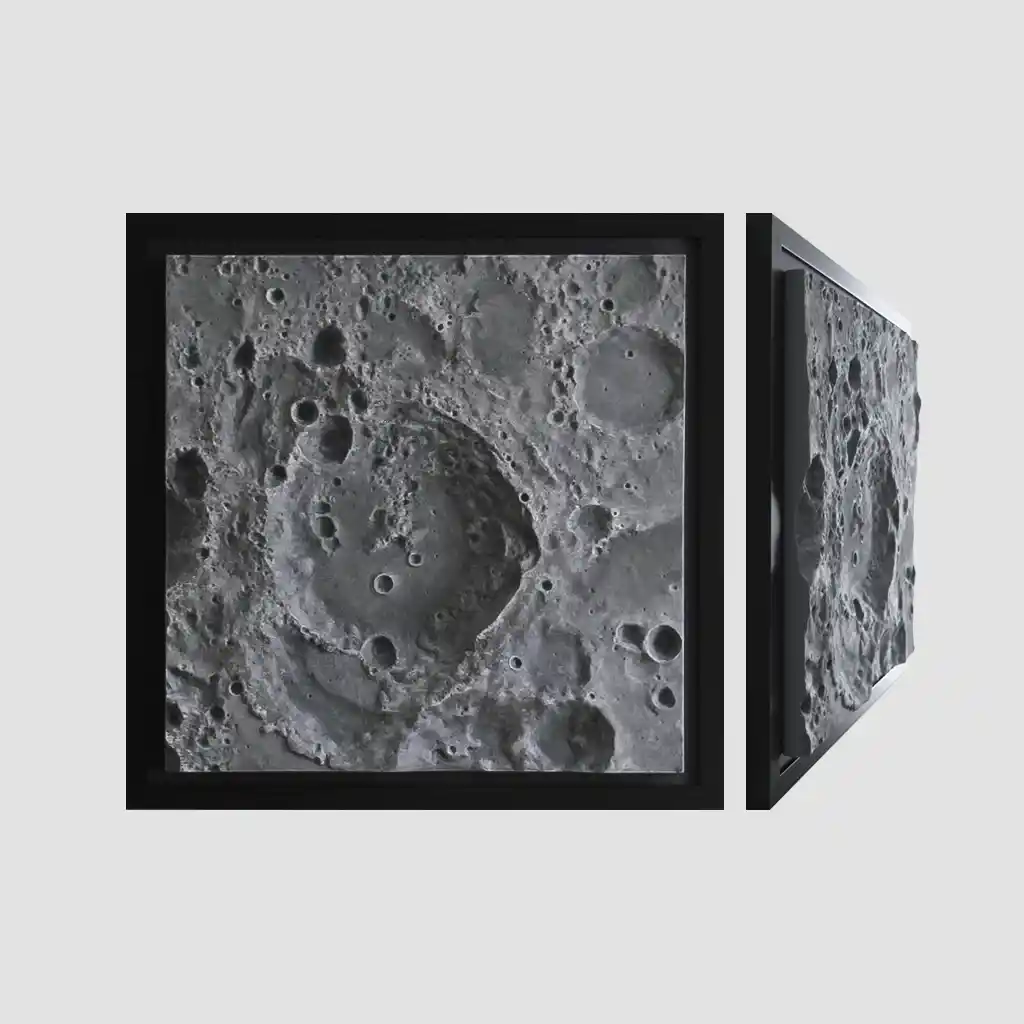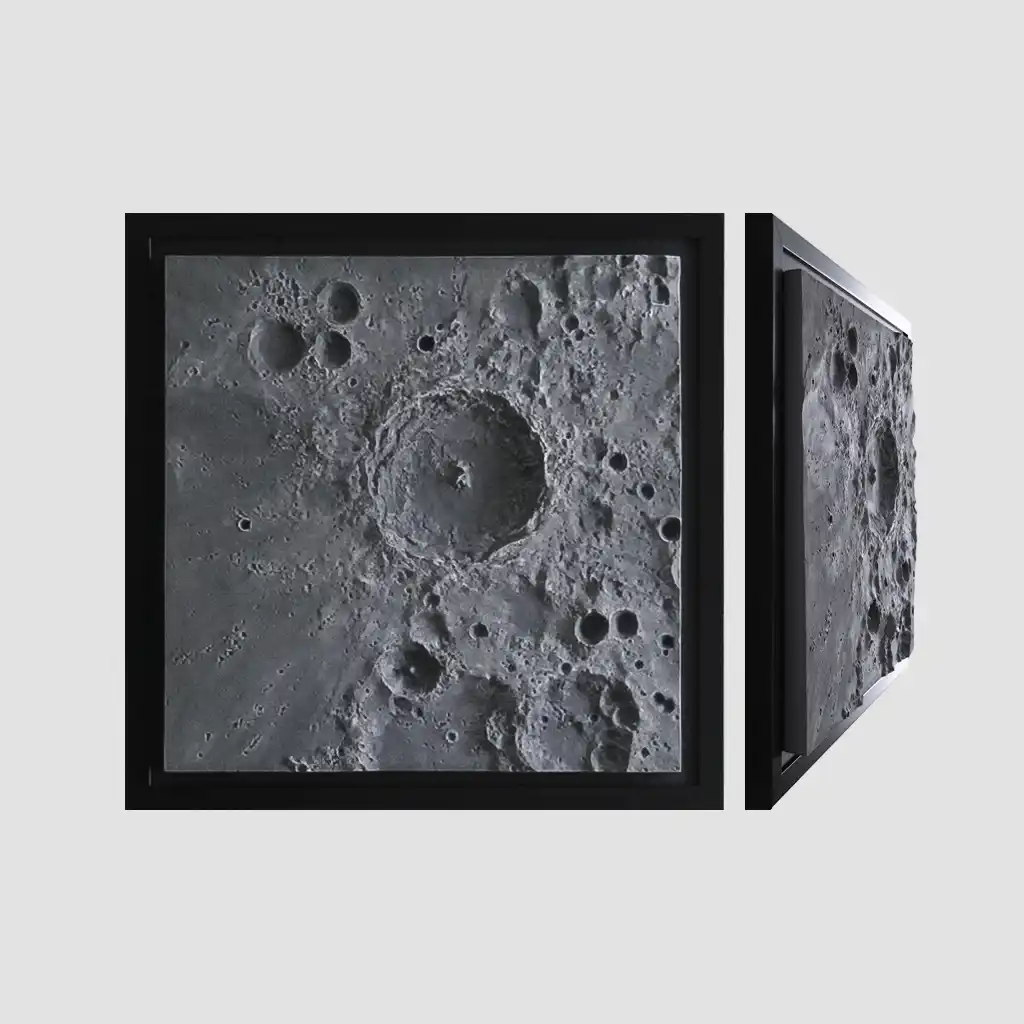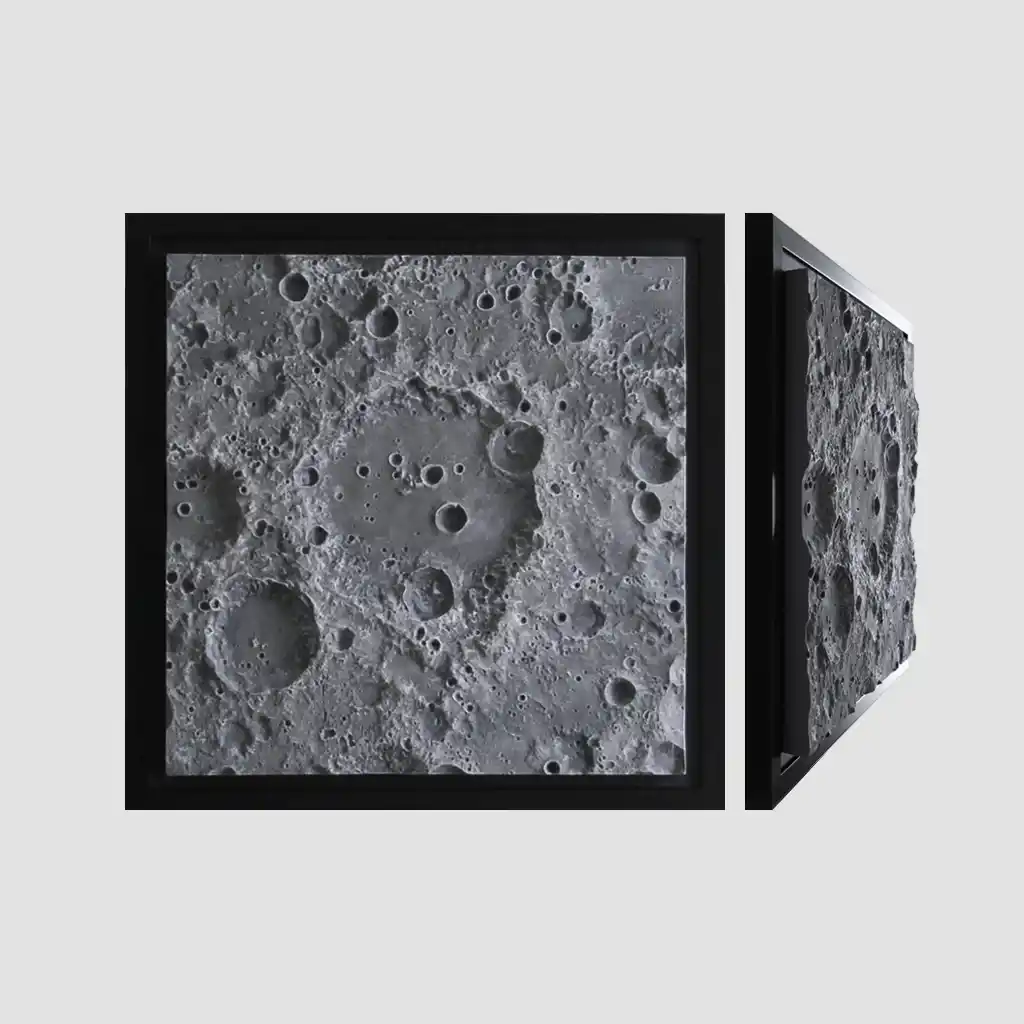Scientific Interest
Copernicus Crater offers key insights into the Moon’s geological history. Its rays, formed by ejecta from the impact, are bright and less weathered than the surrounding terrain, marking it as a young, large impact crater. Copernicus was first observed in the early 1600s, likely by Galileo Galilei, and named after Nicolaus Copernicus in the 17th century.
The crater’s well-preserved state allows scientists to study impact events and the Moon’s internal structure. Its central peak and terraced walls offer insights into impact dynamics. Spectroscopic data from spacecraft like the Lunar Reconnaissance Orbiter (LRO) show a mix of minerals, including highland materials and basaltic rock, helping to understand the Moon’s crust.
Copernicus’ age helps calibrate the lunar cratering chronology, providing a clearer timeline of impacts and events like the Late Heavy Bombardment. The rays are crucial for studying the effects of impact events and lunar surface processes, including space weathering and regolith formation. Though not yet targeted for human missions, Copernicus remains an important site for future lunar exploration.
Formation
Copernicus Crater is estimated to have formed around 800 million years ago, making it a relatively young feature in lunar terms. It was created by a large impact event, likely caused by a meteoroid or asteroid striking the Moon’s surface. This impact was powerful enough to create the distinct central peak, terraced walls, and rays of ejecta that spread out for hundreds of kilometers.
Diameter 93 km (57 mi)
Depth 3.8 km (2.4 mi)
Age 800 MYO
Eponym Nicolaus Copernicus
Location of Copernicus Crater as Seen from
the Earth’s Northern Hemisphere
* This item is artisan crafted with meticulous care. Given its handmade and hand-finished nature, variations are to be expected and celebrated.
| Size | Width | Height | Depth |
|---|---|---|---|
| S | 7.25 in (18.4 cm) | 7.25 in (18.4 cm) | 1.5 (3.8 cm) |
| M | 13.25 in (33.6 cm) | 13.25 in (33.6 cm) | 1.5 in (3.8 cm) |
| L | 25.25 in (64.1 cm) | 25.25 in (64.1 cm) | 1.5 in (3.8 cm) |
| XL (Coming Soon) | 49.25 in (125.1 cm) | 49.25 in (125.1 cm) | 3.25 in (8.3 cm) |
Add a review
Shipping
Where do you ship?
We primarily ship within the continental United States, with shipping costs included in the product price. For customers outside the U.S., a nominal shipping fee will apply. Please contact us, and we’ll work with you to ensure your Xterra Frame reaches your location.
How long does shipping take?
This is determined by your location. Orders are shipped from our Raleigh location and should arrive to you within a week of the shipping notification.
Are your products in stock?
Every model is handmade and produced individually. To reduce waiting times, we begin creating your order the very next day and most orders are shipped within 2 weeks of your order.
How much does shipping cost?
Shipping is included within the cost of your Xterra frame.
How do I know when my order will arrive?
You will receive a notification and tracking number via email after your order has been processed.
Where is my order?
Each order will receive a tracking number where you can look up online to determine where your order is and when you anticipate it’s delivery.
Returns
Returns will be accepted for up to 14 days of Customer’s receipt of tracking number from Xterra. You, as a Customer, are obliged to inform us via email before you return the item.
To be eligible for a return, your item must be unused, in the same condition that you received it, and in the original packaging.
ARTEMIS COLLECTION
COPERNICUS
FREE SHIPPING on orders in the Continental United States
Every product is uniquely handmade, requiring a minimum of three weeks to achieve its distinct quality.
ABOUT (TABLET & Mobile)
Copernicus Crater offers insights into the Moon’s history. Its bright rays mark it as a young crater, named after Nicolaus Copernicus in the 17th century.
Its well-preserved state reveals impact dynamics and Moon structure. Spacecraft data identify minerals like basaltic rock, shedding light on the crust.
Formed 800 million years ago, Copernicus helps refine lunar cratering timelines and reveals surface processes. It remains a key site for future exploration.
Location of Copernicus Crater as Seen from the Earth's Northern Hemisphere
Materials
*This item is artisan crafted with meticulous care. Given its handmade and hand-finished nature, variations are to be expected and celebrated.
Dimensions
| Size | Width | Height | Depth |
|---|---|---|---|
| S | 7.25in (18.4 cm) | 7.25in (18.4 cm) | 1.5 (3.8 cm) |
| M | 13.25 in (33.6 cm) | 13.25 in (33.6 cm) | 1.5 in (3.8 cm) |
| L | 25.25 in (64.1 cm) | 25.25 in (64.1 cm) | 1.5 in (3.8 cm) |
| XL | 49.25 in (125.1 cm) | 49.25 in (125.1 cm) | 3.25 in (8.3 cm) |
